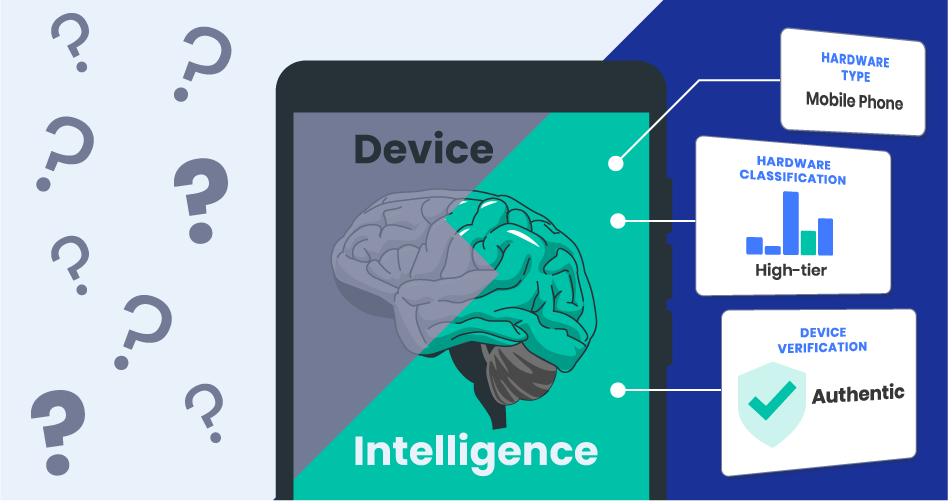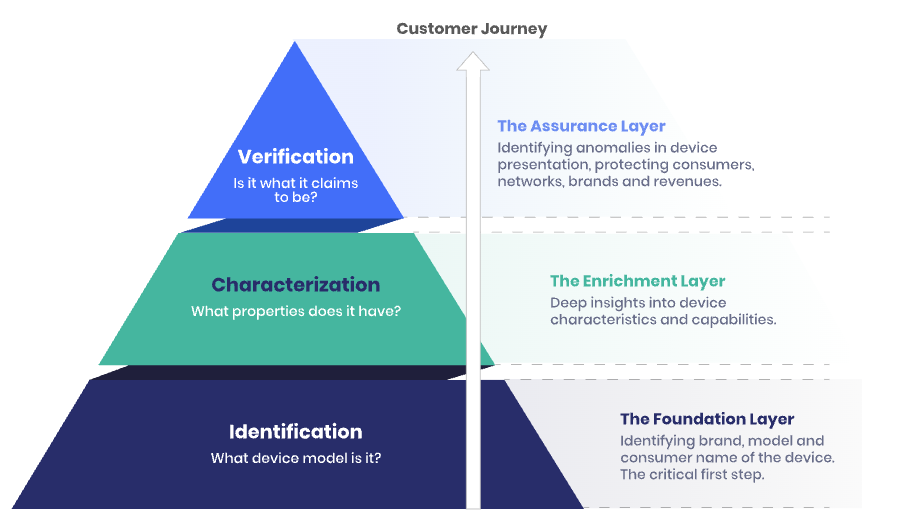
The DeviceAtlas philosophy can be summarized as follows: because all digital content is consumed on a connected device of some kind, the user experience of that content (or service) is bounded by the capabilities of the device. Yet people often overlook this simple truism, even when their businesses are highly dependent on delivering an exceptional user experience.
There is a great description of the core problem by Chris Zacharias; it dates back ten years but describes how sensitivity to disadvantaged users grows the addressable market.
What DeviceAtlas seeks to achieve is to enable the levelling of the playing field, so that disadvantaged users (via device or connectivity limitations) can still participate as first class citizens of the web.
DeviceAtlas enables its customers to understand the device used to access their content and services, so that its capabilities or limitations can be accommodated, rather than serving a one-size-fits-all pageload to all visitors. DeviceAtlas customers have highlighted this as part of not only market reach but brand protection; major brands want everyone to have a good experience of their brand.
Our vision is exactly this – to enable the web to deliver on its promise of being a resource for all. This cannot be achieved without awareness of, and sensitivity to, the end user device. This after all was the stated purpose of the user-agent string in the foundational document for the web: the HTTP specification.
The role of the connected device
The connected device is the final step in the content journey to the consumer and in that capacity it has multiple roles to play; retrieval, rendering and presentation. Combined, these affect overall quality of experience for the consumer, which in turn drives level of engagement and conversions.
In many ways, the moment of connection of the user device to the web page/ product or service is the moment of truth; how well and how quickly it performs the task of retrieving, rendering and displaying the content determines business outcomes. Google’s Core Web Vitals metrics provide one means to measure aspects of this; but simple bounce rate measurement, separating mobile and desktop traffic, can quickly isolate where problems are manifested.
DeviceAtlas as an intelligence source
DeviceAtlas customers know precisely what is accessing their content and services, in real time. This includes the nature and capabilities of the device, browser and/or application or software (including non-human traffic).
This is achieved by maintaining a repository of all connected device models, indexed to permit device identification in multiple ecosystems: the web, mobile networks, and native apps. For every device model, an extensive set of metadata defining the device characteristics is maintained.
DeviceAtlas customers are provided with access to this data, packaged for consumption in real-time applications or as an OEM component for embedding into B2B services. We see many use cases for this data across our customer base, but the core deliverable remains the same: deep insight into the end user device, its characteristics, capabilities and authenticity.
We refer to this knowledge of the end user device as device intelligence.
How DeviceAtlas defines Device Intelligence
Per the diagram below, device intelligence comprises multiple layers, each with a dependency on the layer below.

At the foundation, device identification provides knowledge of the vendor/brand, the model and the consumer recognized name or product family. There can be different device identifiers for any given device: for example the HTTP headers at browser layer, make/model strings at the OS layer and TAC at hardware layer for a cellular device. Any one of these identifiers can be used to identify the device model, which in turn links to the device characteristics.
Next layer up, device characterization provides a set of metadata on the device, covering a wide range of areas including hardware capabilities, connectivity supported, multimedia codecs supported, OS and browser information. This layer is where the bulk of customer use cases are manifested: analytics, optimization, targeting.
Finally, device verification. This layer leverages both identification and characterization to perform some key validation checks: firstly, to ensure the different device identifiers are aligned; and secondly, that the actual device characteristics match those of the device identifiers. (For example, it can arise that a server may mask itself by using HTTP headers for a mobile device when accessing a service. The server hardware characteristics will not match those of a mobile device when checked). Verification of the user’s device is as important as verification of the user’s identity when providing access to proprietary resources, and even as part of paywall protection measures.
Notably, the DeviceAtlas definition is strictly non-PII.
How widespread is device intelligence usage?
What we see happening in every vertical is that the market leaders invest most time in understanding and supporting the preferences of their users, and this extends to the devices they use. It is not really a surprise that successful organizations are data driven; they invest in reliable data services and embed them throughout their processes, at every point where data can add value. A specific datapoint to illustrate this is that DeviceAtlas supplies a quarter of the Fortune 100 as direct customers, and most of the Fortune 10,000 are indirect customers of DeviceAtlas data through their partners and service providers who integrate DeviceAtlas into their products and services as an OEM component.
Ultimately, this is a brand protection play. Top brands need every touchpoint to be a good experience, since this builds loyalty; and they know that a low end smartphone user today could be a high end smartphone user tomorrow. It is well documented that a poor experience of a brand results in a material reluctance to re-engage with that brand, and this effect can endure over a considerable time.
Similarly, it is about market reach; emerging markets exhibit high diversity of devices (and connectivity), so if it is desired to provide services on a global basis, the need for a reliable source of intelligence on connected devices is paramount. The same principle of market reach applies not just to geography, but also socio-economic strata; if you want to reach all the citizens in a territory, it is vital to be serving the content in a form their devices and data allowances can support.
Why the rapid growth in interest in device intelligence?
As sensitivity to end user privacy has increased over recent years, with the EU’s GDPR regulations being a key milestone, access to information about end users has become more restricted in many markets. When less information is available about the end user, businesses start to look for other signals they can use to better tailor their services. This is where the device comes in; it is a source of valuable contextual and actionable data.
A second driver has been the continued growth of the size of web pages, in terms of bytes delivered. The HTTP Archive identifies that for the top 100,000 websites, the median web page delivered to mobile devices is now over 2.4 MB. This represents a growth of 45% over the last three years. This growth has had the effect of neutralising performance improvements in devices and networks over the period: the Speed Index in the HTTP Archive shows the median page load time for the top 100k websites as 6.1 seconds for mobile devices (vs 3.4 seconds for desktop). This is essentially unchanged over the last three years. A key metric typically tracked by marketers is bounce rate, but this is not commonly broken out to show bounce rate on mobile, which is typically a lot higher than desktop bounce rate. This is due to both technical and human factors: the technical aspects are the constraints in delivery to mobile and an example human factor is that users are typically less patient when using a mobile device. So really it’s a perfect storm: more users are using their mobile device to access content and services, while these are delivered more slowly on mobile devices, and at the same time performance gains are neutralised by growth in page weight. The winners are those who measure and manage these effects to maximize their reach.
What are the challenges in understanding connected devices?
At DeviceAtlas we regularly hear from businesses that have been maintaining their own solutions, but have come to the realization that it is not the best use of their resources.
The challenge breaks into two main areas: firstly, knowing what the connected device is: this requires the ability to parse the available identifying signals at high speed in real time, which is essentially a technology challenge. Secondly, the acquisition and maintenance of detailed metadata on connected devices, and the development of a coherent taxonomy, requires considerable investment in data processing with appropriate governance required to be in place.
An additional factor is that the landscape is far from static, so it is necessary to continually adjust in order to ensure high coverage. Ironically, the emergence of increasingly powerful tools such as LLMs seems to be continually offset by growth in landscape challenges; some problems just don’t seem to stay solved, particularly where humans are involved.
To give an example of a real world outcome, one DeviceAtlas customer reported an 18% revenue uplift as a direct outcome of replacing their own solution with DeviceAtlas. Others have hinted at even greater benefits, but are understandably reluctant to share insights.
The counter to this is that we regularly see major brands failing on even the first step in the journey, in that they are unable to identify the device used by their customer or subscriber when they connect from a different device. In the alert sent to the end user, vague information about the device is provided such as ‘Android’ or ‘K’, causing doubt for the user as to whether the notification is intended for them. This is a symptom of a recent web landscape change (Google’s removal of signals from the Chrome and Chromium user-agent strings), increasing the difficulty of even the basic layer of device intelligence; that is, the ability to identify the device model. (This is a solved problem, but it raises the bar for DIY solutions).
The growth of masquerades
An area of the ecosystem where there appears to be virtually unlimited creativity is fraud. It is remarkable what lengths some organizations or individuals will go to, to either access products and services without subscribing to them, or to access proprietary data for nefarious purposes.
As a result, we are seeing increasing usage of device intelligence in digital identity verification.
The reason for this is probably two-fold; firstly, any individual will typically only use a constrained number of devices, so the ability to associate a set of devices with a user acts as a coarse filter or whitelist, providing at least some level of affirmation of user identity. Secondly, if the connected device exhibits anomalies in how it presents itself, this is a cause for concern and an indicator that additional verifications of the user would likely make sense.
Conclusion
DeviceAtlas was launched in 2008, closing its first Fortune 100 customer in 2009. Today it is maintaining data on over 100k device models, across 50 device types, with direct customers in 70 countries. Trillions of requests are handled daily across DeviceAtlas deployments in support of diverse use cases, with a vital dependency on the device intelligence provided.
Every indication from this small slice of time is that while human creativity exists and while market competition remains, device diversity will grow and fragmentation will continue to be a challenge. What DeviceAtlas delivers to its customers is a means to reverse entropy; to convert unstructured data into structured, actionable data, and to thereby enable the delivery of their content and services to a wider market.



